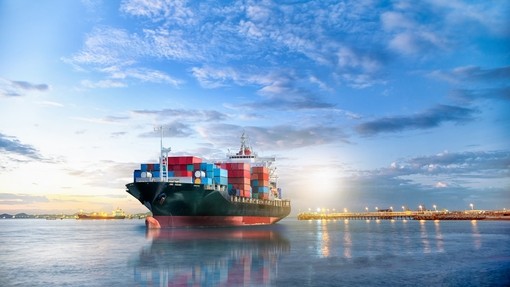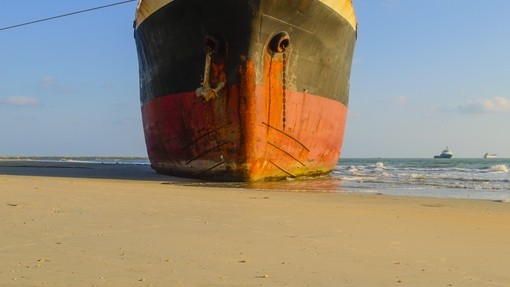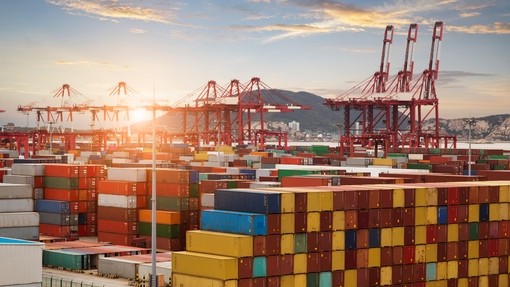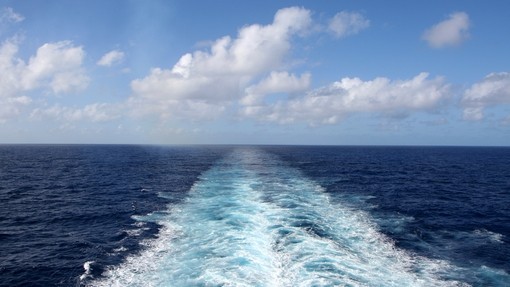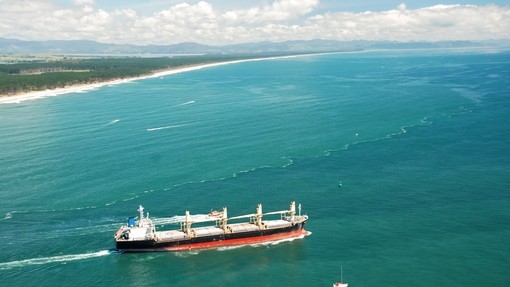Nautical Challenge Limited -v- Evergreen Marine (UK) Limited [2019] EWCA Civ 2173
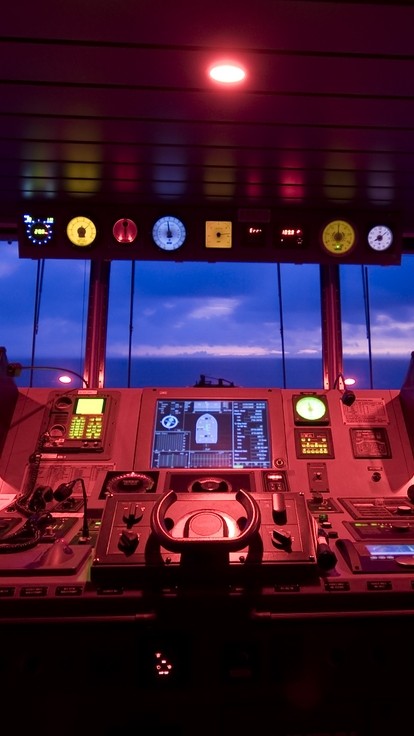
Details
This collision case, which was before the Court of Appeal in October 2018 on the issue of liability, came back to the High Court in January for the measure of damages to be assessed. A number of heads of claim were considered including the costs of, and time taken, for repairs, and the extended losses arising from the vessel owner’s impecuniosity. The Admiralty Court and Court of Appeal decisions on liability and apportionment have been summarised in our April 2017 and November 2018 editions of Shipping Case Digest.
Factual background
In 2015, the “EVER SMART”, a laden container vessel owned by the respondents, collided with the “ALEXANDRA I”, an 18 year old VLCC owned by the claimant, outside the dredged channel that serves as the entrance and exit to port Jebel Ali in the UAE.
The damage to both vessels was initially estimated to be in the region of US$32 million for “ALEXANDRA I” and US$4 million for “EVER SMART”.
In October 2018, the Court of Appeal upheld the first instance decision that “EVER SMART” was 80% at fault for the collision both in terms of relative culpability – for her failures in keeping an adequate visual and aural lookout – and in terms of causative potency due to her excessive and unsafe speed. “ALEXANDRA I” was found 20% liable for failing to keep adequate aural lookout. The respondents have applied for permission to appeal to the Supreme Court on the issue of apportionment. The application is still pending.
Legal issues
Mr Justice Andrew Baker separated the recoverable loss claims for “ALEXANDRA I” into three main categories:
- The basic loss, measured in the normal way by assessment of the reasonable cost of repairing the damage, plus compensation for loss of generally accepted use of the vessel as a profit-earning chattel during the period reasonably required for repairs.
- The extended loss arising as a result of the claimant’s inability to pay for the collision repairs in cash, including claims for loss of use due to the vessel’s arrest.
- The extended loss in the form of the permanent diminution in value of the vessel as a result of the collision and repairs, including the subsequent sale by judicial auction whilst under arrest in Singapore, rather than in a normal market by a willing seller to a willing buyer.
The basic loss
Two preliminary issues under this head were addressed. First, Baker J was satisfied on the evidence that the decision to choose a repair yard in Dubai rather than one in Bahrain that had provided a cheaper quote, was reasonable, predominantly on safety grounds due to its proximity to Jebel Ali and the vessel’s restricted capability to steam under her own power.
The second issue was how long it ought reasonably to have taken to carry out the repairs, absent any delays consequent upon the owner’s impecuniosity. In this respect, the Court preferred the claimant’s case that she would be fully repaired and ready for employment in 220 days rather than the respondent’s suggested total repair period of 156 days, which, among other things, relied on an unrealistically fast steel fabrication rate.
In respect of loss of use, the claimant did not set out a claim for special damages by providing evidence of specific lost fixtures for the vessel, but sought only general damages, on the principle that the claimant, as vessel owner, had been deprived of her use as a profit-earning chattel. The Court accepted the evidence of the chartering market expert that, at 18 years old, she was already entering her penultimate year of useful employment and would likely have only two trade routes open to her: Arabian Gulf to India or, if she could maintain a satisfactory up-to-date SIRE inspection report, Mediterranean or Black Sea to the Far East.
The Court then went on to quantify each item claimed in respect of repairs and allowed a total sum for basic loss of US$7,641,394.78 including the customary 1% ‘agency’.
The extended loss
The claimant claimed additional losses arising from the fact that it had had to negotiate credit terms with the yard for the repair costs which meant that “ALEXANDRA I” was actually out of use for a total of 534 days.
Despite the fact that, prior to the collision, the vessel owner was profitable with net assets of US$4-6 million, Baker J found that it was reasonably foreseeable that such a claimant might not be able to find the US$7.5 million needed for repairs, in cash from its own assets. The court also noted that hull and machinery underwriters had denied liability and refused to pay out under the insurance policy, and such a situation was also found to be reasonably foreseeable. Both of these findings on foreseeability of impecuniosity were in line with the House of Lords decision in Lagden -v- O’Connor [2003] UKHL 64 and Baker J declined the respondent’s invitation to reopen analysis of foreseeability in light of a passage in the legal text, McGregor on Damages.
Whilst Baker J provisionally found in favour of “ALEXANDRA I” on foreseeability of impecuniosity, the claimant had failed to comply with an unless order issued by Teare J to fully disclose the vessel’s actual trading history in the year prior to the collision. The Court found that this was because there was substantial Iranian trading involved and determined that the collision voyage had been from Iran with a cargo of Iranian origin. Therefore, the likelihood of not receiving a prompt pay out under the hull and machinery policy would have been perfectly obvious to owners and, on that basis, they should have acted more promptly to negotiate and conclude an agreement with the yard.
However, the extended loss claims failed anyway, not because of arguments on whether impecuniosity was reasonably foreseeable, but because the claimant had not proven causation on the facts. As a result, it was not necessary to examine whether hull underwriters were correct to deny liability and deprive the owners of a prompt cash payment to cover repairs.
As it transpired, “ALEXANDRA I” emerged from repairs a whole year older, into a collapsed chartering market, at a time when her realistic employment period had been only two years at the point of collision. Therefore, it was not surprising that she could not trade her way out of financial difficulties. In Baker J’s judgment, the collision in combination with owner’s impecuniosity, did not cause the extended delays for which owners claimed and therefore these losses should not be “EVER SMART”’s responsibility within the sphere of her liability for negligence. As the repairs and the credit terms should have been concluded in orderly time there was no basis to lay at “EVER SMART”’s door any of the extended loss consequences that resulted from the additional 10 month delay.
In respect of the final head of claim for diminution in value, there was no evidence of a permanent stigma on the secondhand and/or scrap sale and purchase markets due to the collision damage and this was confirmed by the evidence of the respondent’s market expert, Mr English. All claims in this respect therefore also failed on the facts.
In summary, the total loss of use claim allowed, including 1% agency was US$1,667,199.93 and total recoverable basic losses for “ALEXANDRA I” were US$9,308,594.71.
The recoverable losses claimed in respect of damage to “EVER SMART” were just over US$5m, which initially included a claim for loss of use. These were eventually agreed at US$2.53m, including ‘agency’ of 1%.
As these claims were made in separate suits, rather than a single claim and counterclaim, they fell to be apportioned 80:20 in favour of “ALEXANDRA I”, although that apportionment might change if “EVER SMART” are granted permission to appeal to the Supreme Court.
Case comment
The court made clear that “ALEXANDRA I”’s claim was infected with the basic misapprehension that anything and everything adverse that occurred after the collision could be claimed against “EVER SMART”. Whilst Mr Justice Baker upheld the finding in Lagden that a wrongdoer must take their victim as they find him, including the additional costs arising from a reasonably foreseeable lack of financial means, the vessel’s claims in this case for extended losses were too remote.
It can also be seen how carrying cargoes in breach of international sanctions can lead to the significant or even total loss of value of a vessel if hull and machinery deny liability for claims as a result. Any issues vessel owners suffered in this case due to needing credit for the repairs could be considered self-inflicted. “EVER SMART”’s application for permission to appeal to the Supreme Court on the issue of apportionment of liability is still pending so this may not be the last we hear of this dispute.
This article originally appeared in the February 2019 edition of shipping case digest. Other articles include:
Kaefer Aislamientos SA de CV -v- AMS Drilling Mexico SA & Ors [2019] EWCA Civ 10
Sonact Group Limited -v- Premuda SPA (The “FOUR ISLAND”) [2018] EWHC 3820 (Comm)

